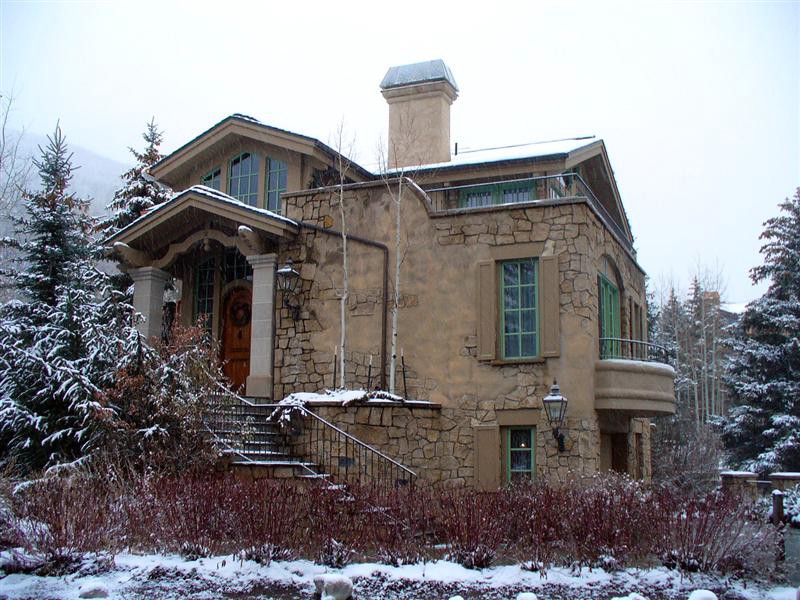Some tips we recommend for getting the most bang for your sustainability buck in retrofitting existing buildings.
Bathrooms / Kitchens
A water saver faucet that only pours when you put pressure on a small lever can cost about $17 but can save 2.2 gallons per minute of water flow.
Keep a bucket next to the shower. Capture the water running while it heats up, then let it cool and use it to water your indoor plants or garden!
Use your Energy-Star dishwasher. Yes, I’m serious. A full load of dishes can use 6 times less water than handwashing!
Old toilet not in bad enough shape to replace? Or maybe you don’t want to clog the landfill. Install a toilet dam if you have old toilets and want to use them til they die before replacing them, and thus keeping them out of a landfill. These hold back about 1.3 gallons per flush. Rondell makes a $100 dual-flush retrofit device so you can have light and heavy flush options. For a free alternative, take a water bottle, fill it with coins, sand or pebbles, and drop it in the tank to save up to 1/2 gallon per flush.
Use the water from cooking veggies, once it’s cooled, to water your garden and indoor plants. The nutrients from the veggies will feed the plants. Don’t use potato water.
Climate Control, Hot Water, and Electricity
Run your appliances — especially dishwashers and laundry — in the late evening when peak load is minimized and the electric company is producing more power than it needs.
If your hot water heater is not Energy-Star rated: Spend $20 for a water heater blanket to get 10–40% more efficiency out of your hot water heater! This can reduce your home energy use by up to 9% per month!
A programmable thermostat costs $36 but can reduce home energy use by 33% per month! Til recently, your baseboard radiators were just going to run when they ran. No mas! Programmable thermostats are now available for baseboard heat!
Install foam light-switch and electrical plate sealers to minimize the air infiltration from these devices (which prevent insulation from being installed in the wall.) Installing the little foam inserts costs nearly nothing — 33 cents per outlet, but can save up to 2% of your energy bills per month!!
Attach all your appliances and electrical devices to a surge protector, and turn it off when you are gone. Removing these “phantom loads” can decrease your home energy use by 20% per month! If your electrical devices have an indicator light, a clock, a power adapter, or a standby function, it’s using energy even when it’s off. Put these, and especially your cable box — which uses half the power of a refrigerator — on a power strip too.
Find a central place in your home to set up a power strip and have the entire family commit to using this location to charge household items like batteries, phones, ipods, etc. Turn off the power strip when it’s not in use. A timer-regulated power strip is now available from Belkin, and will turn itself off after an amount of time that you determine.
Clothes dryers use at least six percent of all household electricity consumption and 10–15 percent of domestic energy in the U.S. Use a clothesline on the south or west side of your home to minimize the use of these expensive appliances!
Do you have an extra $5 per month and really want to change the way utility companies do business? Go to the DOE Can I Buy Green Power in My State? Website and then call your utility company and switch to green power. It will take you less than 10 minutes, and for an extra few bucks a month, you’ll be putting your utility company on notice that you want better practices out of them.
Landscaping
If you have a lawn, be sure it’s seeded with native grasses. If you don’t currently, seed your lawn over with natives and allow the old grass to die. The cost savings in water use will be amazing!
Add an evergreen screen of arborvitae on the north side of your home to block winter winds which make your heating system work harder. These plants can grow up to 3’ per year. Plant them at least 10 feet from your home.
If you’d like to make your landscaping work for your energy savings, place at least 5 @ 10’ tall deciduous trees 6–10’ from the building on the southwest side or corner of the house. Evergreen or deciduous trees on the southeast corner will also help if you have hot mornings. Fill the space below with smaller deciduous and evergreen shrubs, plants, and small trees. This will prevent the ground from reflecting heat back up under your eaves, will provide shade, and will help cool the space around your house through evaporation. Many flowering plants that need heat to flower will love these places. (Northern hemisphere only, if in the Southern hemisphere, reverse this and locate the trees on the Northwest corner.) Just remember not to plant a tree within 5’ of the edge of the building, nor plants within 2’.
Plant walking thymes between pavers so you don’t have to deal with weeds, and get a bonus of fresh herbs!
Install a rainbarrel! Rainbarrels are a popular way to start harvesting your rainwater now, especially in urban areas! They are relatively inexpensive and can be installed along the side of your home, under a deck, or in other unused spaces.
Fireplaces
If you have an existing standard fireplace, purchase a fireplace insert which will help you retain up to 60% more heat using less fuel. You can also purchase a wood stove insert for your existing fire box for even more heat capture.
A chimney, even when the damper is closed, is like leaving a door ajar. Install a $40 balloon damper to prevent 14% of home heat loss, and reduce energy use by 7%.
Interior Comfort and Air Flow
Use 12 medium-sized plants per 1000 SF to recycle your entire home’s air in 24 hours. Plants can remove toxic chemicals from the air, including formaldehyde, benzene, and carbon monoxide. The best plants include Bamboo Palm, Chinese Evergreen, English Ivy, Gerbera Daisy, Janet Craig Dracaena, Dracaena Marginata, Dracaena Massangeana/Corn plant, Mother-in-Law’s Tongue, Chrysantheiums, Peace Lily, and Dracaena “Warneckii”
You can improve your homes energy performance by up to 30% by just plugging holes. If you have broken windows, fix them or install an interior storm window. If they are leaking air (if the drapes swing even when the window is closed) caulk the gaps or install weatherstripping if the window is operable. Make sure the window is locked! The lock not only gives you security but also seals the window shut. Go through your attic and fill any holes in your insulation left by drilling for holes, electrical cords, or mechanical and plumbing systems. If your attic is insulated but your attic access door isn’t make insulation cover for the door. Take a piece of scrap plywood that will cover the entire opening. Cover that with 8" batt or 3" rigid insulation, and slide it down on top of your attic door opening as you are leaving the attic. If you have vents on the eaves of your house, make sure that the air from the eaves is not being blocked by the insulation. Air movement is actually critical to the insulation working correctly. Make sure that the frame around your basement door is sealed tight. A leaky basement can affect your home’s energy needs by as much as 11%.
When Bandaids are not an Option:
Energy Saving Upgrades that offer Tax Credits
Insulation & Sealing Air Leaks
Install cellulose-based spray foam and caulk all your edges to to save on heating and cooling. Rebates are available up to $750 from some state govt’s.
Biomass Stoves
A qualified wood or pellet stove can cost $1,700 to $4,000 but they can also save 30–50% of your heating costs if you use oil or electricity. Annual fuel costs can run from $300 to $600, on par with natural gas. Use reclaimed fall timber rather than fresh cut when possible. Some models can require a different chimney, though, so watch out for that, as it can easily be a thousand-dollar addition.
Water Heaters
You can save up to 50% on water heating costs by replacing your old water heater with a $2,000 energy-rated one. This is most helpful when supplying a house full of people or a large demand of warm water. Instant tankless models are very efficient, but the tradeoff is they do make some noise, so be prepared for that. GE and Rheem are making tank heaters that are supplied by dual power sources including a air-source heat pump, which they claim matches water heating savings of tankless models.
Roofs
Is it time to replace your roof? Install a roof in mid-tones like khaki or grey rather than silver, black, or white to absorb heat during the winter when costs are most high. This can save up to 10% on heating.
Exterior Windows and Doors
Only replace old doors and windows if they are irreparable, or built of something other than wood. If you have old wood windows that are just in disrepair, they are often cheaper to repair. You can also install decent storm windows for about $100/window to save as much as 20 percent on your heating bill in colder climates. Look for “low-E” coatings and energy star ratings. Count on replacement prices starting at $200 per window and $300 per door.




